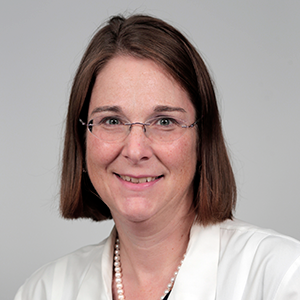
25 Jul Interview with Cathleen Colon-Emeric of Duke University School of Medicine

Dr. Cathleen Colón-Emeric, MD, MHS is Professor of Medicine and Associate Dean for Research Mentoring at Duke University, a Senior Fellow for the Duke Center for Aging and Human Development, and the Associate Director of the Geriatric Research Education and Clinical Center at the Durham VA Medical Center. Dr. Colón-Emeric is a clinical researcher, focusing on fracture prevention in older adults, particularly after hip fracture and in the long-term care setting. Current work includes a UH2/UH3 grant identifying phenotypes and biomarkers of physical resilience in older adults. Read her full bio.
Interview with Cathleen Colon-Emeric of Duke University School of Medicine
Q: What research are you or your lab focusing on and why, and what problem(s) are you trying to solve?
A: We are focused on physical resilience, or the dynamic ability to maintain or recover function following a stressor. The objective of our current work is to characterize phenotypes, elucidate biological mechanisms, and validate clinically feasible tests of three resiliencies in older adults: cognitive, musculoskeletal, and immune.
Q: What makes your research unique? Can you share with us some recent findings?
A: The concept of physical resilience is relatively new in aging research. We are some of the first investigators to conceptualize different statistical methods to define high and low physical resilience, and we have preliminary evidence that these measures reflect a characteristic at a whole person level because they predict outcomes across different domains of function.
Q: What excites you about your work?
A: If physical resilience proves to be, at least in part, a characteristic at the whole-person level that cuts across organ systems, then interventions that enhance physical resilience have the potential to improve function in multiple domains after a variety of different stressors. Physical resilience is hypothesized to be associated with healthy biology in the “pillars of aging”, a set of seven intertwined processes that have been proposed as drivers of age-related change. Determining whether biomarkers of these “pillars” are associated with resilient outcomes may elucidate mechanisms and, perhaps, identify new interventional targets.
Q: When thinking about your research and the field you are working in, what are some recent breakthroughs that are propelling the field forward and how will they impact healthcare?
A: While this is a relatively new field, recent work has led to understanding that resilience is not simply the opposite of frailty, but may have separate underlying pathways that open new options for intervention. Current biomarker studies should help predict recovery across a variety of stressor types, and may identify targets for additional studies.
Q: What are the short-term challenges that your scientific field is facing?
A: A lack of accepted terminology and validated resilience phenotypes is currently limiting progress in this area. Defining resilience requires multiple measures of recovery in multiple domains over time, and is therefore not easy to define in administrative or other widely available datasets.






